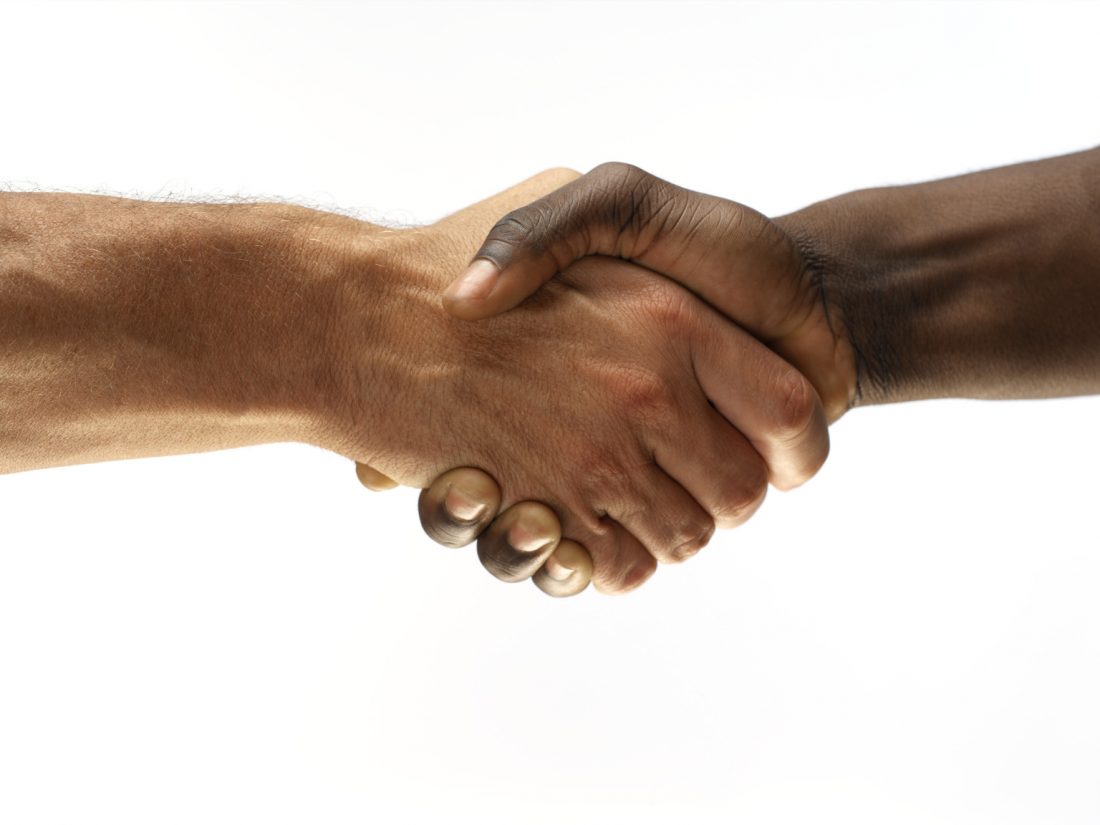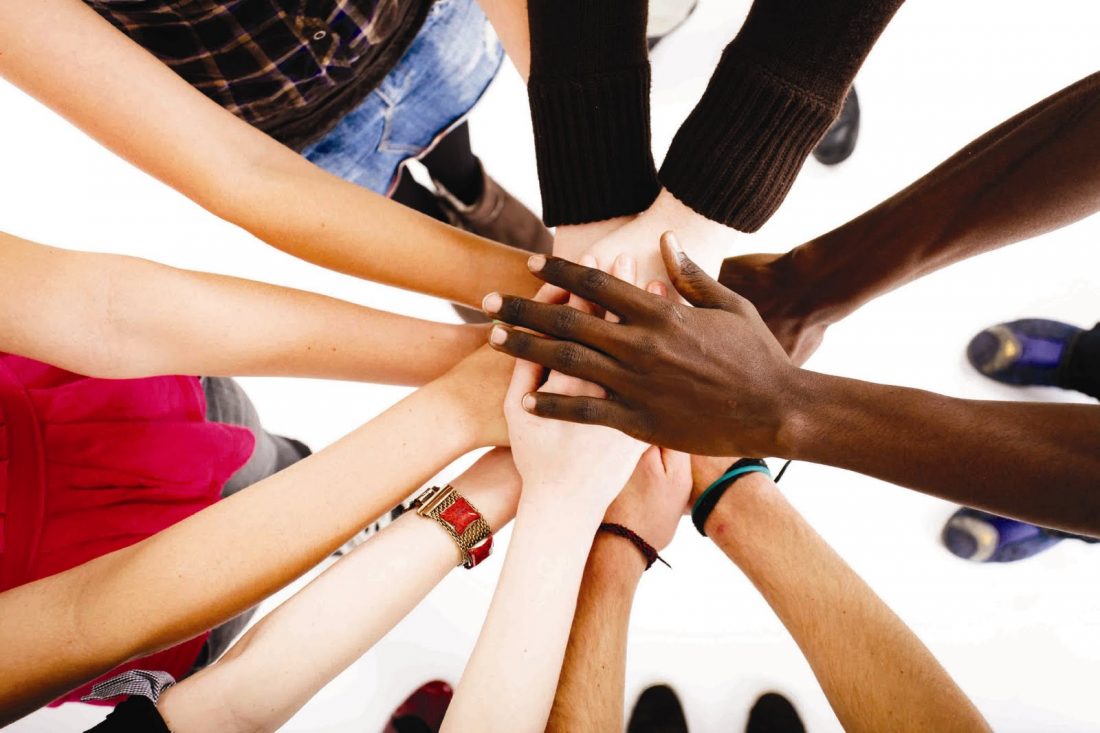Why I Do See Color and That’s Okay

**Note** This is Example 2/5 of our “coiski 101: 4 Steps on Writing an Effective Personal Narrative” lesson.
February is Black History Month. It is 28 or 29 days set aside to intentionally recognize and celebrate the contributions that African Americans have made to this country. Believe it or not, there are opponents to the idea of Black History Month. Just last year, actress and former Fox News contributor Stacey Dash called for an end to BET and Black History Month, citing that entities such as these created “segregation” and not integration. A little over a decade ago, respected Oscar-award winning actress Morgan Freeman said that he doesn’t support Black History Month. He remarked that Black History was “American History.” In the same vein, people opposed the Black Lives Matter movement with an All Lives Matter rebuttal.
These ideas, regardless of which side of the argument you fall on, are subsidiaries of the “I don’t see color” thought process. Well, I do. I see color, size, shape, age, gender, and any other demographic category that one may fall in. They can’t not be seen.
I was born in Orangeburg, South Carolina. My parents grew up in the neighboring town of Bowman, SC, where the population is under 1,000, and that minuscule population is composed of 70% and 28% black only and white only, respectively; 98% percent of either one or the other. Needless to say, my experience with racial diversity was little to none as a very young child. I rarely saw a white person there and never saw a Hispanic or Asian. With the area’s demographics being as they were – and South Carolina being a historically confederate state – my family was obviously one that used “they” or “white folk” when referring to white people.
Equipped with a limited knowledge base in terms of racial diversity, my family relocated to Germany and ultimately to Texas. My sister and I spent time back in South Carolina with my grandparents and extended family, strengthening the misconception of everyone looking similar. At around the age of five or six, we moved back to Germany as a family. At that time, my father worked for a company that was contracted by the military, so we stayed off the base but went to an American school where English was the first language of the majority of the students.

At this school, there were kids of all shapes, sizes, colors creeds, and backgrounds. This is where I begin to notice color. I begin to notice that people were different. I lost my first fight here because of that difference (he hit me with a low sweep that I couldn’t recover from). This kid was from a completely different place than I was, had a different upbringing, a different struggle and a different view on life. Even at the tender age of six, we knew everybody wasn’t the same; there were the cool kids and the nerds; there were the good kids and the kids with discipline issues. Most importantly, there were boys that ran fast, killed the tether ball court and won four square battles, and there were those that just didn’t. We didn’t really mess with those. Despite all of these subcultures, there wasn’t really a clear line of division among various skin colors.
I experienced diversity when I got to Texas, but for me, a young kid whose memories mostly link back to South Carolina at the time, all of the different faces within a single classroom were different. Really different. I was more aware now because I was in a foreign place with foreign people. There were white kids, black kids, Asians, Hispanics, some other ethnicity that I had no previous recollection of –which I would later find out was Middle Eastern—all in a single building. There was no racial tension. No social lines to get through. No segregation. I was even chosen to be a part of the ‘Gifted and Talented’ group that was called out to do special assignments twice a week, and it led me to being selected for a split class of advanced second and third graders. I was afforded great opportunities.
But there were differences. I noticed them. Names were different. People spoke differently from each other. Although I saw and experienced a variety of skin tones, it was never made a big deal. We were kids. Our innocence and naiveté within the confines of the protection of the school walls kept us insulated. We connected over the simple common thread of being six years old. We played before school, then waited until recess to play again. That was the totality of our existence. It was all good. The differences didn’t matter. At least that’s what I thought.
During that same second grade year, there was a young girl that caught my eye. Amber. Amber was tall with long flowing hair and beautiful eyes. She was the smartest, most popular girl in class. Amber was the girl of my six and half year old dreams. Plus, she was already seven, so she was more mature. I made sure to sit by her during story time and walk by during lunch to see if she was looking at me. When Amber came by the tetherball courts, I had to show my best stuff. I had a crush that I felt was reciprocal. I mean, she smiled and gave me the hair flip every time she saw me. I had no idea what the hair flip meant at the time, but knowing what I know now, that was significant! The problem is, she never spoke to me around her friends. Never. She would sit and talk any other time but just giggle and run off when with her friends. Her friends weren’t in my class. I didn’t know a single one of their names. All I know is Amber and I sat near each other in class, and she was the one.
The recess playgrounds in elementary school can be both the picture of unabashed freedom and a hellhole of harsh realities, such as the reality that I was not as fast as Roberto, and it, in fact, had nothing to do with his shoes. I know this because I begged my parents to get me those black K-Mart kicks because there is no way a Hispanic kid named Roberto was physically faster than me. Turns out, I was wrong. Much like the false assumption about my speed, my assumption of my chances with Amber were shattered when I overheard the reason for her friends pulling her away whenever I came around.
Amber informed them that I always sat by her in the library and that she thought I liked her. After the giggles, one friend replied, “He’s dark.” Another round of laughter ensued before they spotted me and ran off. I never sat by Amber again and didn’t even look at her.

How dare they reduce me to just the ‘dark kid?’ I was smarter than all of them. I read four books that year. FOUR! How many did they read? I was in a special class for the gifted and talented. They were idiots. They couldn’t even spell ‘idiot.’ I was out there writing in cursive already. THEY DIDN’T KNOW ME! Plus, I had already told my boys about Amber. I defended her when my homeboy responded, “…that white girl in class?” Little did I realize, my crew was doing the same thing her crew did to me, and the same thing I did to Roberto. We all used color and outer appearance to come to a conclusion.
However, this was done to me. I was the victim this time. Here I am, questioning myself because of something some dumb girl said; a girl I didn’t know who didn’t know me. Almost three decades have passed, and I still remember that remark. Crazy, huh? It didn’t even mean anything to me. Hasn’t affected my life in the very least other than on that day, I realized that we indeed were different. Not only were we different, but that there will be times when people will base their relationship with you around those differences.
Time went on, and I forgot about Amber. We moved back to Texas due to my mom joining the military and being stationed in Fort Hood, the largest and third most populated military base in the country. We settled in a small town called Copperas Cove, where I would grow up. Being in such proximity of a such a massive military base caused my school to be a melting pot. We had students that ranged from welfare to properties on the golf course; from rocking gold teeth and Southside fades to Dr. Martin boots and a preppy comb over. There were too many ethnicities, skin tones, and racial mixes to even keep track of, so we didn’t try. Even with the assorted population of Cove and its neighboring city of Killeen, we were still known as the “white school.” We were still perceived to act a certain way or be into certain things due strictly to us being from Cove. Within the high school walls, there were still those known to only pursue “black dudes” or “light skin chicks.” Even then, most of us all hung together without much thought or concern for the color differences. It was a difference, not a barrier.
After high school, the realization that color was a factor – if not an issue – became even more prevalent. I played basketball at a junior college that was already in a small city. With it being a junior college in Central Texas that admitted anybody and had affordable tuition, it was attractive to students and parents in the smaller surrounding towns. I’m talking graduating-class-of-25 small. These people did not have the privilege of encountering the diversity that I had. Questions like, “Are they thugs?” were thrown the direction of the majority of the black, durag-wearing(it was 2001) basketball team. Declarations of not dating black dudes or only dating white girls were made often. I graduated from a university in Abilene, TX, where a person of another race was usually referred to as “them” or “they,” or “y’all” when spoken directly to. By this time, everyone was fully aware of their color and had already begun to formulate, if not settle into, opinions about those of a different color. Many times, these expressions were not malicious, but sometimes they were. More often than not, the suppositions were a function of what they know and don’t know. It was an ignorant manifestation of a limited knowledge base.
I could run off a 5-page list of these sorts of incidents in my almost 34 years of life. The point is that color exists. It is one of the few things in our lives that we have absolutely no control over; one of the few things we cannot choose. Some people will look at your skin tone as an advertisement for everything you have to offer. These judgmental people will place expectations and stereotypes on you based solely on the color of your skin. Not your race; not your education; not where you live or your beliefs. These people won’t even bother to read the inside flap of the cover of your book of life, prior to creating the narrative in their minds and deciding if they do or do not desire to delve any further. This is the reality of the world. My upbringing and experiences have caused me to not only see, but also feel the differences. The variation of color is what makes the world beautiful. I’ve worked in a school of majority affluent white kids and in one of low-income minority kids. I’d be lying if I said they were alike. We aren’t all the same, and that’s an amazing thing. Color is an extremely small portion of who somebody is or will be, but it is a part. I see it. I accept it. I embrace it. I just don’t allow it to guide my decision-making process. Our colors are differences, not barriers.

**Note** Read the five steps we implemented in creating this article here.
RELATED: Why I’ll Buy the “He Got Game” Air Jordan 13 Every Time it Releases
